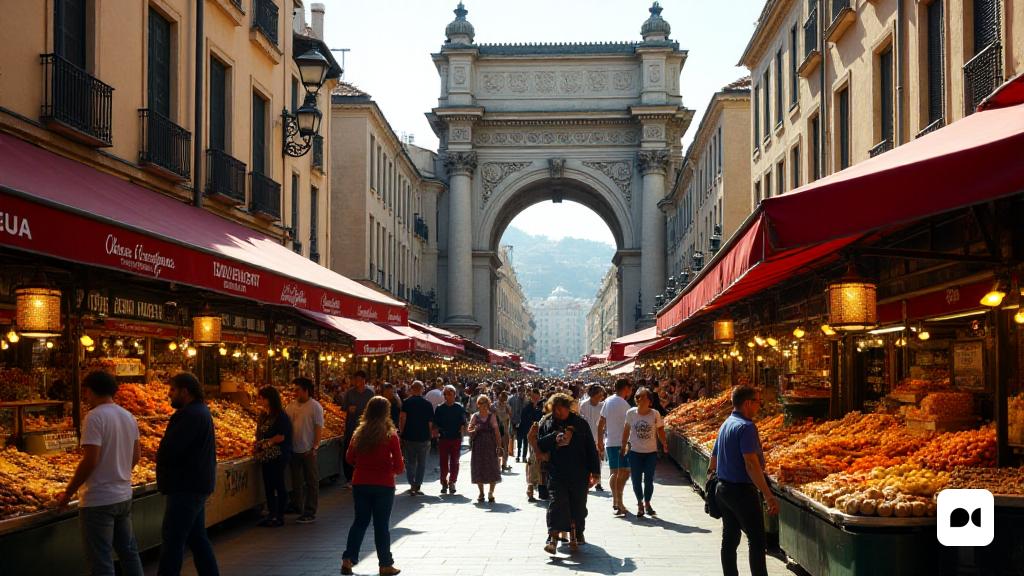A market with history: origins and evolution
La Boqueria, one of the most emblematic markets in Barcelona, was born as a meeting point for farmers and butchers in the thirteenth century, when La Rambla was still a space outside the city walls. The oldest documentation that is preserved about sellers in this area dates to 1217, marking the beginning of a tradition that endures to this day.
The transformation of the market: a new beginning
Following the destruction of several convents in Barcelona in 1835, La Boqueria found its final place. The old convent of San José became the new space for the stops of La Rambla in 1836. The inauguration of the market, with the placement of the first stone on March 19, 1840, marked a crucial moment in its history.
The name that tells a story
The name ‘Boqueria’ comes from the external stalls that offered goat meat, a type of meat that, despite being considered second, was highly appreciated by local consumers.
La Boqueria corners: a visual journey
The iconic image of the market entrance arch, built in 1913, has become one of the most photographed places. The following year, the iron cover we now know was installed, replacing the provisional roofs that had been there since 1874.
The essence that endures
With a legacy dating to 1867, the olives and preserves stop has been a testament to the history of the market. Recently renewed, this stop honors its roots with an olive tree that symbolizes continuity and evolution over the years.
Modernization and Innovation: 21st Century Boqueria
With the reforms made between 1998 and 2001, the market offices were modernized, creating a functional and attractive space for management and merchants. Now, they are home to a kitchen classroom where multiple gastronomy courses are held each month.
A gastronomic space of reference
The transformation of the market allowed the old warehouses to become gastronomic terraces, where natural light flows and combines with the culinary offer of bars and restaurants.
Challenges and adaptations
Plaça de la Gardunya, historically used for loads and downloads, was transformed with an underground parking that opened in 2013. However, some paradistas still remember with nostalgia the impact that the works had on their business.
A market that lives with tourism
Today, La Boqueria is a reflection of tradition and modernity, it attracts visitors from all over the world. In a recent report, we have had the opportunity to explore the lesser -known corners of the market, revealing a facet that often escapes the attention of tourists.

